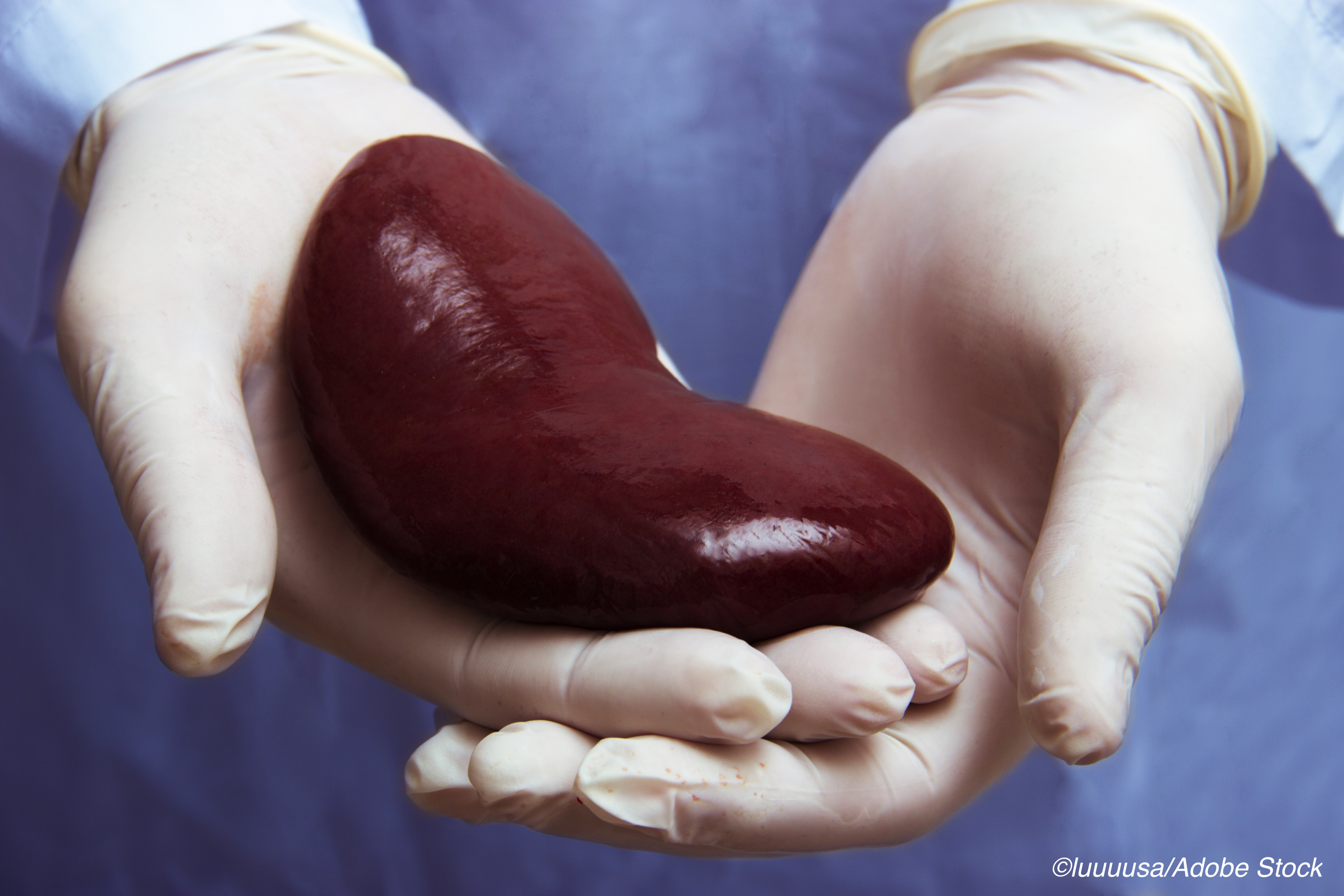The use of long-term corticosteroid therapy after kidney transplant may be unnecessary, according to results from a prospective multicenter trial.
In this trial, researchers found that there was no difference in kidney allograft survival between groups of kidney transplant recipients that received maintenance immunosuppressive treatment with tacrolimus and mycophenolate mofetil, regardless of whether they were given corticosteroids, E. Steve Woodle, MD, College of Medicine, University of Cincinnati, Cincinnati, and colleagues reported in JAMA Surgery.
Individuals who undergo kidney transplantation receive immunosuppressive drug treatment — typically consisting of a calcineurin inhibitor such as cyclosporine or tacrolimus, mycophenolic acid or azathioprine, and corticosteroids — in order to prevent rejection, Woodle and colleagues explained. However, corticosteroid use is associated with a number of complications, including new-onset diabetes, avascular necrosis of the hip, premature onset of cataracts, mood changes, Cushingoid appearance, and skin changes. Interest in the idea of eliminating corticosteroids has been heightened with the development of tacrolimus and antibody induction, and a trial Woodle led between 1999 and 2002 (published in 2008), as well as subsequent single-center studies, suggest that outcomes of patients withdrawn from corticosteroid treatment are “acceptable” compared to historical controls.
But despite this, according to a report from Hart et al, only 30% of transplant recipients are treated with corticosteroid withdrawal. “Factors contributing to continued use of corticosteroids include concerns about long-term safety and uncertainty about the modest metabolic benefits of corticosteroid withdrawal,” Woodle and colleagues explained. “In contrast, proponents of corticosteroid withdrawal hypothesized that longer follow-up might be required for the metabolic benefits to affect outcomes.”
Here, Woodle and colleagues set out to determine long-term outcomes from Woodle et al’s 2008 report by linking trial data with the Organ Procurement and Transplant Network registry.
The trial included 386 low- to moderate-immune risk adult recipients of a kidney transplant without delayed graft function or short-term rejection within the first seven days of transplant. Participants were randomized to receive tacrolimus and mycophenolate mofetil, with or without corticosteroids, seven days after initial transplant.
The primary outcome of the trial was a composite of patient death, graft loss, or moderate to severe short-term rejection within five years after transplant.
Woodle and colleagues found that, with a median follow-up of 15.8 years after transplant, the adjusted hazard ratio of allograft failure from any cause including death was 0.83 (95% CI, 0.62-1.10), while the hazard ratios for allograft failure censored for patient death (defined by the requirement for long-term dialysis or repeat transplant) was 0.78 (95% CI, 0.52-1.19) — and these results did not differ between patients assigned to withdraw from corticosteroids compared to those continuing corticosteroids.
There was also no difference between either group of patients regarding time to death at any time after and time to death censored at time of allograft failure. Subgroup analyses found that living donor recipients, non–African American recipients, patients without rejection, and patients without diabetes had better outcomes with regard to time to allograft failure from any cause including death. However, there were no significant differences in these subgroups for patients treated with or without corticosteroids.
The authors also found that the outcomes of both groups were comparable to similarly treated contemporary patients in the Organ Procurement and Transplant Network registry who met trial eligibility criteria and were treated with the same immunosuppressive drugs.
“Corticosteroids may not be necessary as part of a calcineurin-based multiple drug immunosuppressive regimen in kidney transplant recipients,” Woodle and colleagues concluded.
That there is no survival difference between groups, and that outcomes are similar to contemporary, matched recipients in a national registry “are important observations, in that late outcomes have been a concern with ESC (early steroid cessation),” wrote Arthur J. Matas, MD, Division of Transplantation, Department of Surgery, University of Minnesota, Minneapolis, in a commentary accompanying the study.
“The authors question why ESC is not used more widely. I agree,” Matas wrote. “… The Woodle et al study provides convincing long-term data showing that recipients of transplants are not penalized by ESC. Going forward, in contrast with justifying ESC, transplant centers using steroids should justify why they are using steroids for their recipients or recipient subpopulations, given that there is no evidence of improved outcomes and steroids have adverse effects.”
-
The use of long-term corticosteroids as part of maintenance immunosuppression therapy for recent kidney transplant recipients had no significant benefit for allograft failure, researchers reported.
-
These results suggest that corticosteroids may not be necessary as part of a calcineurin-based multiple drug immunosuppressive regimen in kidney transplant recipients.
Michael Bassett, Contributing Writer, BreakingMED™
Woodle reports grants from Astellas Pharma and grants and personal fees from Sanofi during the conduct of the study.
Matas had no relevant relationships to disclose.
Cat ID: 632
Topic ID: 630,632,632,730,471,192,925,312



Create Post
Twitter/X Preview
Logout